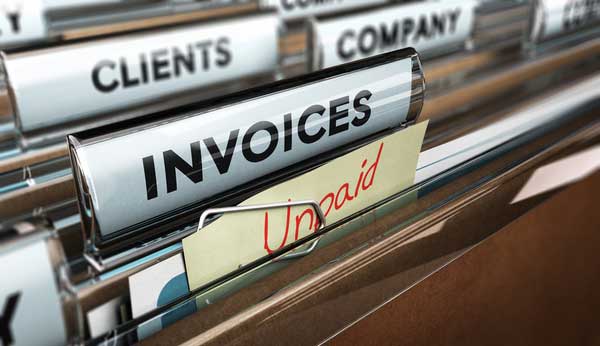E-invoicing is set to become the new standard for businesses in Malaysia. As announced in Budget 2024, e-invoicing will be mandatorily implemented in three phases from 2024 to 2025 for all businesses regardless of size. This move by the government aims to boost accounting efficiency and enhance Malaysia’s tax administration through real-time validation and storage of transactions.

Say goodbye to conventional paper or digital invoices and hello to the future of seamless transactions with e-invoicing’s continuous transaction control. Read on to understand what e-invoicing entails and how your business can benefit from adopting it.
Overview of E-Invoicing Implementation in Malaysia
To support the growth of the digital economy, the government intends to roll out e-invoicing in stages. This aligns with the 12th Malaysia Plan’s focus on strengthening digital infrastructure and digitalizing tax administration.
E-invoicing will facilitate real-time or near real-time validation and storage of business-to-business (B2B), business-to-consumer (B2C), and business-to-government (B2G) transactions.
As announced in Budget 2024, the e-invoicing implementation timeline is:
- Phase 1 (August 1, 2024) – Mandatory for businesses with an annual turnover of RM100 million and above
- Phase 2 (January 1, 2025) – Expanded to businesses with RM25-100 million annual turnover
- Phase 3 (July 1, 2025) – Mandatory for all businesses regardless of size
What is an E-Invoice?
An e-invoice is a digital representation of a business transaction. It contains the same key information as a conventional paper invoice, including:
- Supplier and buyer details
- Item descriptions
- Quantities
- Prices
- Taxes
- Total cost
This data is crucial for tracking daily transactions and bookkeeping.
According to LHDN guidelines, e-invoices are required in two scenarios:
- As proof of income when a seller sells a product or service
- As proof of expenses when a buyer purchases from entities exempted from e-invoicing or overseas sellers. In such cases, the buyer has to self-issue an e-invoice.
There are four types of e-invoices:
- Invoice: To record a transaction
- Credit note: To correct an error, apply a discount, or account for a return where no refund is involved
- Debit note: To charge additional fees or expenses
- Refund: To confirm refund of a payment
Benefits of E-Invoicing for Businesses
Transitioning to e-invoicing provides several advantages for businesses:
Improved Accuracy
E-invoicing enables precise reporting of transaction values without errors that could occur with manual data entry in paper invoicing.
Increased Efficiency
With automated tax calculation, e-invoicing streamlines and speeds up the invoicing process.
Greater Cost Savings
By eliminating manual work for invoicing tasks, e-invoicing reduces operating costs for businesses in the long run.

E-Invoicing Process
The e-invoicing process in Malaysia involves six key steps:
1. Issuance of E-Invoice
The seller issues an e-invoice containing transaction details. This is submitted via direct API integration with LHDN systems or the MyInvoice portal.
2. Validation
LHDN receives and validates the e-invoice.
3. Notification
Upon validation, LHDN notifies both the seller and buyer.
4. Sharing
The seller shares the validated e-invoice with the buyer.
5. Cancellation Request
Either party can request cancellation within 72 hours if errors are found.
6. Storage
LHDN stores the validated e-invoices in their database.
There are two methods for businesses to submit e-invoices to LHDN for validation:
1. Direct API Integration
This allows automated submission of e-invoices directly from a company’s ERP system to LHDN. It’s ideal for high volume transactions and provides workflow automation.
2. MyInvoice Portal
LHDN’s web portal enables manual e-invoice submissions by businesses without an ERP system.
Leveraging IFC ERP Systems for E-Invoicing Efficiency
IFC ERP solutions like PropertyX, ContractX, and HotelX integrated with IFC API can optimize your e-invoicing process through automation.
Key benefits include:
- Automated e-invoice submission – IFC API integration with LHDN’s system simplifies submissions.
- Improved efficiency – IFC ERP automates invoicing, inventory, accounting and other workflows.
- Legal compliance – IFC solutions ensure your e-invoicing adheres to new tax regulations.
- Cost savings – Automation reduces manual work and operating costs long-term.
Embrace the future of seamless digital transactions. Unlock greater efficiency for your accounting operations through IFC ERP with API integration.
Conclusion
E-invoicing is the way forward for all Malaysian businesses to improve productivity and cost efficiency. By automating invoicing processes, e-invoicing enhances transaction accuracy and streamlines bookkeeping – saving you time and money.
Leverage solutions like IFC ERP integrated with LHDN’s API to smoothly transition your accounting operations to e-invoicing. Strengthen compliance with new tax regulations while boosting your accounting performance.
